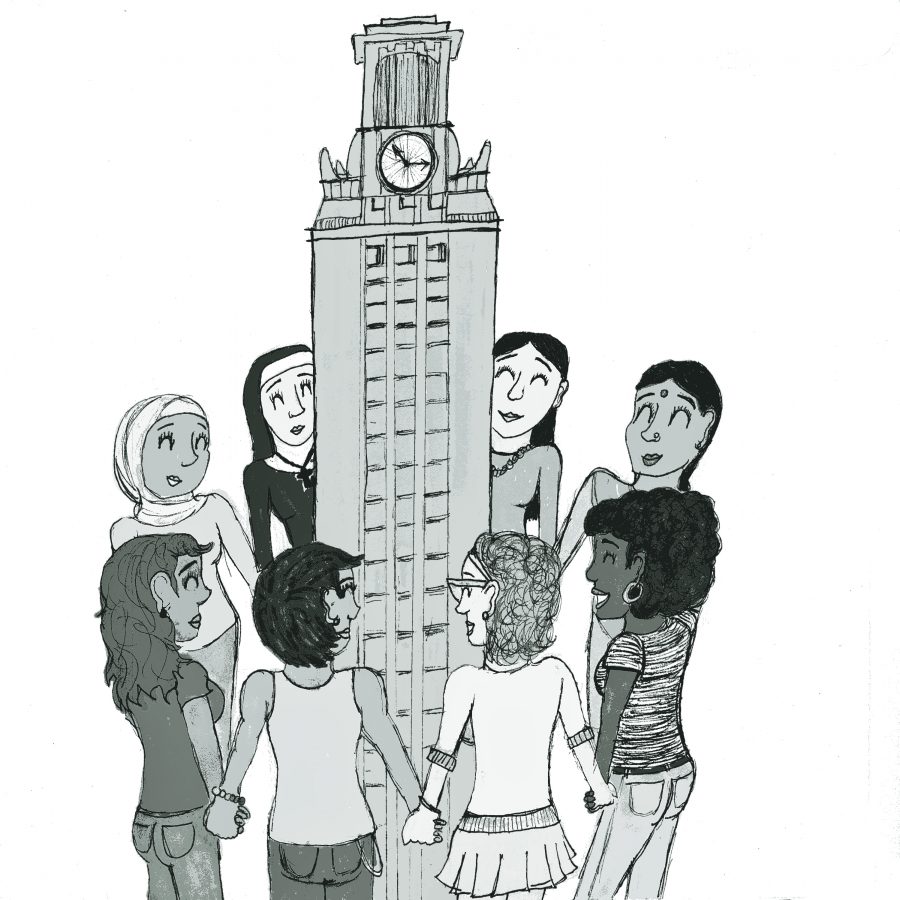Supporters of the Fiji party perpetuating harmful stereotypes of Mexican immigrants claim that the party was to have had an “innocent” “Western theme.” This claim is accurate — except the innocent part. The panoramic celebration of white heroes combating savages of various kinds is a staple of the American imagination and deeply racist, nonetheless. I understand this as a white woman.
In Texas, the Western theme was epitomized by the Texas Rangers, a small corps of state-empowered, white vigilantes lionized in Texas history books even as they persecuted and murdered both Native Americans and Mexicans at will through the 1800s. They repelled Mexicans fighting against the Texan occupation of Mexican territories in 1846. They fought for the confederacy during the Civil War.
After the South’s defeat, the Rangers went on to conquer what the Texas state history website describes reverently as a Texas “‘overrun with bad men,’ with Indians ravaging the western frontier, with Mexican bandits pillaging and murdering along the Rio Grande.” In 1916, they killed at least 5,000 Mexicans during civil unrest across the border.
The Rangers defended Jim Crow and the Ku Klux Klan and were openly racist and sexist, forbidding the enlistment of women and minority groups. When charged in the 1970s with not having any Hispanic members, Rangers replied that there weren’t any qualified Hispanic officers available: “I don’t see any Japanese here,” said one. “I don’t see any Chinamen. We can’t hire every doggone breed there is in the United States.”
The Rangers are in their twilight years, their traditions and purposes given over to modern priorities. However, the mythology about them and the pervasiveness of their ideas about the presence of Mexicans in our state — the wild, racist West — remain.
So, indeed, the Fiji party, a truly disgusting spectacle of racist stereotypes, did have a “Western theme” in the same way that the law students’ party had a “ghetto theme” in 2006. However, the Fiji party is only the most recent expression of a pattern of ongoing injury at UT against its students, faculty and staff of color.
Fraternity parties are not the exception to the rule of racism at UT. Statues of Confederate leaders greet visitors to our Main Mall. Two years ago, it was revealed that Simkins Dormitory was named after a Grand Dragon of the KKK. There is a monument to the Texas Rangers in the form of the “Littlefield Home” at the corner of 24th Street and Whitis Avenue.
Off-campus racism is common as well. Over the past year, black students have reported being targeted by West Campus residents who threw balloons full of (the symbolically pointed) bleach. In 2013, Young Conservatives of Texas called off a terroristic “immigrant hunt” to challenge the “threat” of undocumented students and workers following pressure from the campus community and the community at large.
The Fiji party was given a pass by the University because it occurred “off campus.” In not sanctioning the organization, the University administration commits another agression against its students of color and the broader Austin community.
We cannot expect the University to take meaningful action against racism. Now, as in the past, civil rights gains have emerged from struggle from below. Centers for Mexican and Mexican American studies, black studies, Asian and Asian-American studies and women’s and gender Studies did not appear as gifts from the administration. The pressure put on the University during the civil rights movements in the 1960s and 1970s resulted in gains in representation and voice for minority students. Budget cuts in the ever-more-corporate, lean, mean neoliberal university roll back those victories — making it even less likely that students will be educated in the truths rather than the mythology of Texas expansion.
And then there is the attack on affirmative action. Since the Hopwood decision banning attention to race in 1996, and in spite of more recent partially corrective decisions (like the top 10 percent rule), the proportion of black students at the University remains at less than four percent in a state where black people comprise 13 percent of the population. Latino/a representation is also vastly disproportionate to the demographics of our state. Abigail Fisher’s recent challenge to a perceived but completely false discrimination against white applicants sends yet another message to students of color: You are not welcome here.
What can we do now to combat this pervasive, taken-for-granted racism on and off campus? I propose that we undertake a sustained, multi-racial, agitational movement to educate the campus and broader community about the realities of racism and to hold the administration accountable for offenses committed in the Tower’s shadow — including off-campus racist fraternity parties.
An embrace of a multi-racial movement may be controversial among activists who rightly want members of their particular communities — those most heavily impacted — in the lead. It also might be controversial to analogize anti-Mexican and anti-Mexican-American racism with anti-black racism.
However, the great abolitionist Frederick Douglass’ adage, “They divided both to conquer each,” applies here. The capitalist society that depends upon inexpensive immigrant labor (which, in turn, perpetuates the category of the hyper-exploitable “illegal” immigrant) also depends upon the scapegoating of black people, resulting in mass incarceration and police murder of black men, women and children. We have seen the eruption of a national conversation about race since movements in Ferguson, Missouri, and across the country (including here in Austin against the police murder in 2013 of Larry Jackson, Jr.) forced the broader society to take notice.
White people like me should stand in solidarity with the oppressed to contest efforts of the establishment to “divide both” to “conquer each.” What happens when we all stand together? We should find out, because both black and brown lives matter.
Cloud is a professor in the Department of Communication Studies and the Department of Rhetoric & Writing. She is also a member of the International Socialist Organization.





















